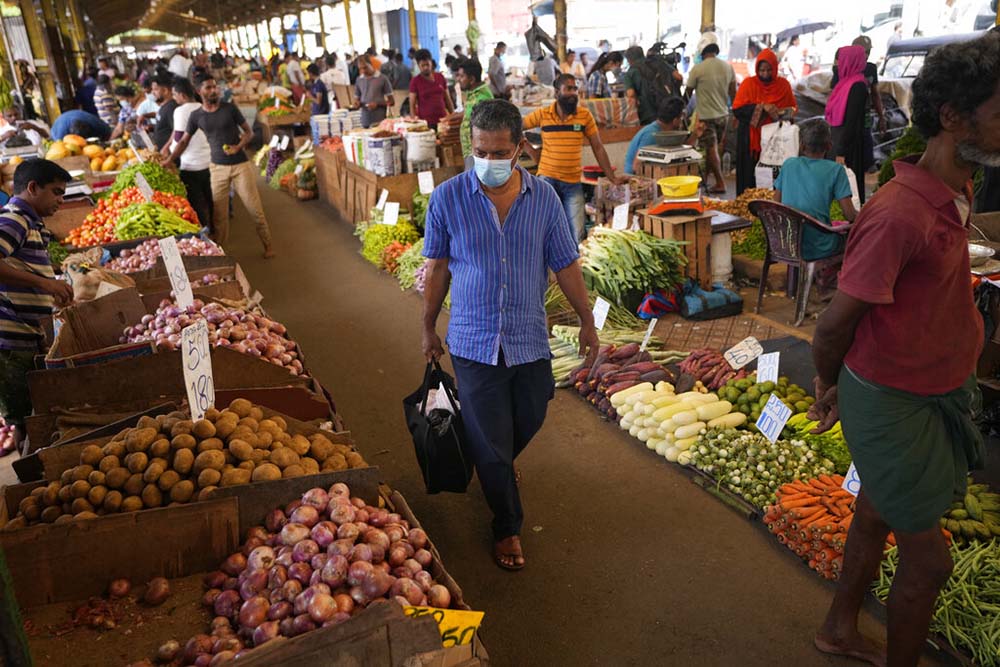
PARIS: World hunger stopped rising in 2022 after growing for seven years but remains above pre-pandemic levels and far off track to be eradicated by 2030, UN agencies said on Wednesday.
Between 691 million and 783 million people faced hunger last year, with a midrange of 735 million, the five agencies said in a report.
The proportion of people facing chronic hunger rose from 7.9% of the world population in 2019 -- before the pandemic -- to 9.2% in 2022.
The annual rise "has stalled", however, with the total falling by about 3.8 million people between 2021 and 2022, according to the State of Food Security and Nutrition in the World report.
"There is no room for complacency though, as hunger is still on the rise throughout Africa, Western Asia and the Caribbean," they warned.
The report is "a snapshot of the world still recovering from a global pandemic and now grappling with the consequences of the war in Ukraine, which has further rattled food and energy markets."
Since 2019, those crises have plunged an additional 122 million people into hunger, according to the UN, with women and those living in rural areas hit particularly hard.
The post-pandemic economic recovery helped improve the situation, "but there is no doubt that the modest progress has been undermined by rising food and energy prices magnified by the war in Ukraine," said the report.
The report was prepared by the UN Food and Agricultural Organisation, the International Fund for Agricultural Development, UNICEF, the World Food Programme and the World Health Organization.
The estimates indicate that hunger "is no longer on the rise at the global level" but it remains "far above pre-Covid 19 pandemic levels and far off track to achieve Sustainable Development Goal 2" of a world free of hunger, the report said.
The UN agencies warned that if the world fails to redouble and better target its efforts, the "goal of ending hunger, food insecurity and malnutrition in all its forms by 2030 will remain out of reach."
'New normal' "There are rays of hope, some regions are on track to achieve some 2030 nutrition targets," UN Secretary-General Antonio Guterres said in a statement. "But overall, we need an intense and immediate global effort to rescue the Sustainable Development Goals." Formulated in 2015 by the UN General Assembly, the Sustainable Development Goals include 17 interlinked objectives including ending hunger and poverty. If the pace of progress does not pick up, nearly 600 million people could still suffer from hunger in 2030, mostly in Africa. The UN agencies warned that the major drivers of food insecurity and malnutrition -- conflicts, economic shocks, natural catastrophes -- as well as glaring inequality seem to become the "new normal". "What we are missing is the investments and political will to implement solutions at scale," said Alvaro Lario, head of the International Fund for Agricultural Development. The worst drought in four decades in the Horn of Africa region threatens to create a famine affecting more than 23 million people in Somalia, Kenya and Ethiopia, the World Food Programme warned in May. Some 2.4 billion people -- three out of 10 people on the planet -- suffered from moderate or severe food insecurity in 2022. The pandemic hit the incomes of many people and the Ukraine war sent prices rising, leaving "billions without access to an affordable healthy diet," the UN agencies said. More than 3.1 billion people did not have enough money for a healthy, balanced diet last year, according to UN figures. "Hunger is rising while the resources we urgently need to protect the most vulnerable are running dangerously low," the WFP's executive director Cindy McCain warned on Wednesday. "As humanitarians, we are facing the greatest challenge we've ever seen." By RSS/AFP READ ALSO:
'New normal' "There are rays of hope, some regions are on track to achieve some 2030 nutrition targets," UN Secretary-General Antonio Guterres said in a statement. "But overall, we need an intense and immediate global effort to rescue the Sustainable Development Goals." Formulated in 2015 by the UN General Assembly, the Sustainable Development Goals include 17 interlinked objectives including ending hunger and poverty. If the pace of progress does not pick up, nearly 600 million people could still suffer from hunger in 2030, mostly in Africa. The UN agencies warned that the major drivers of food insecurity and malnutrition -- conflicts, economic shocks, natural catastrophes -- as well as glaring inequality seem to become the "new normal". "What we are missing is the investments and political will to implement solutions at scale," said Alvaro Lario, head of the International Fund for Agricultural Development. The worst drought in four decades in the Horn of Africa region threatens to create a famine affecting more than 23 million people in Somalia, Kenya and Ethiopia, the World Food Programme warned in May. Some 2.4 billion people -- three out of 10 people on the planet -- suffered from moderate or severe food insecurity in 2022. The pandemic hit the incomes of many people and the Ukraine war sent prices rising, leaving "billions without access to an affordable healthy diet," the UN agencies said. More than 3.1 billion people did not have enough money for a healthy, balanced diet last year, according to UN figures. "Hunger is rising while the resources we urgently need to protect the most vulnerable are running dangerously low," the WFP's executive director Cindy McCain warned on Wednesday. "As humanitarians, we are facing the greatest challenge we've ever seen." By RSS/AFP READ ALSO:
Published Date: July 13, 2023, 12:00 am
Post Comment
E-Magazine
RELATED International



.jpg)

.jpg)